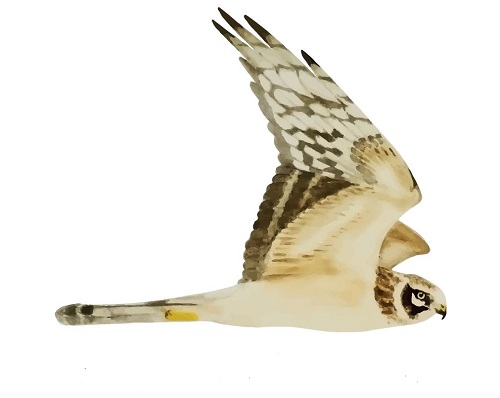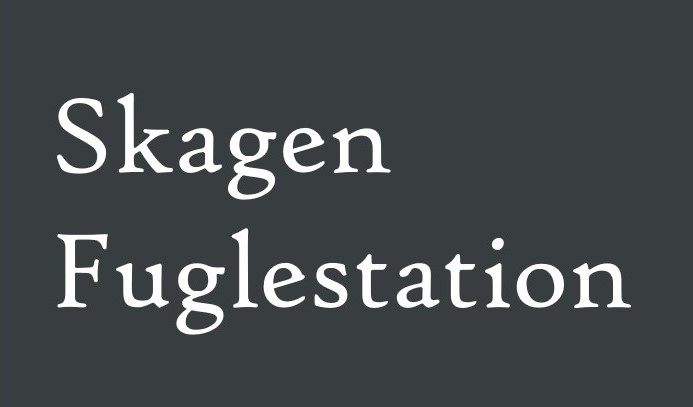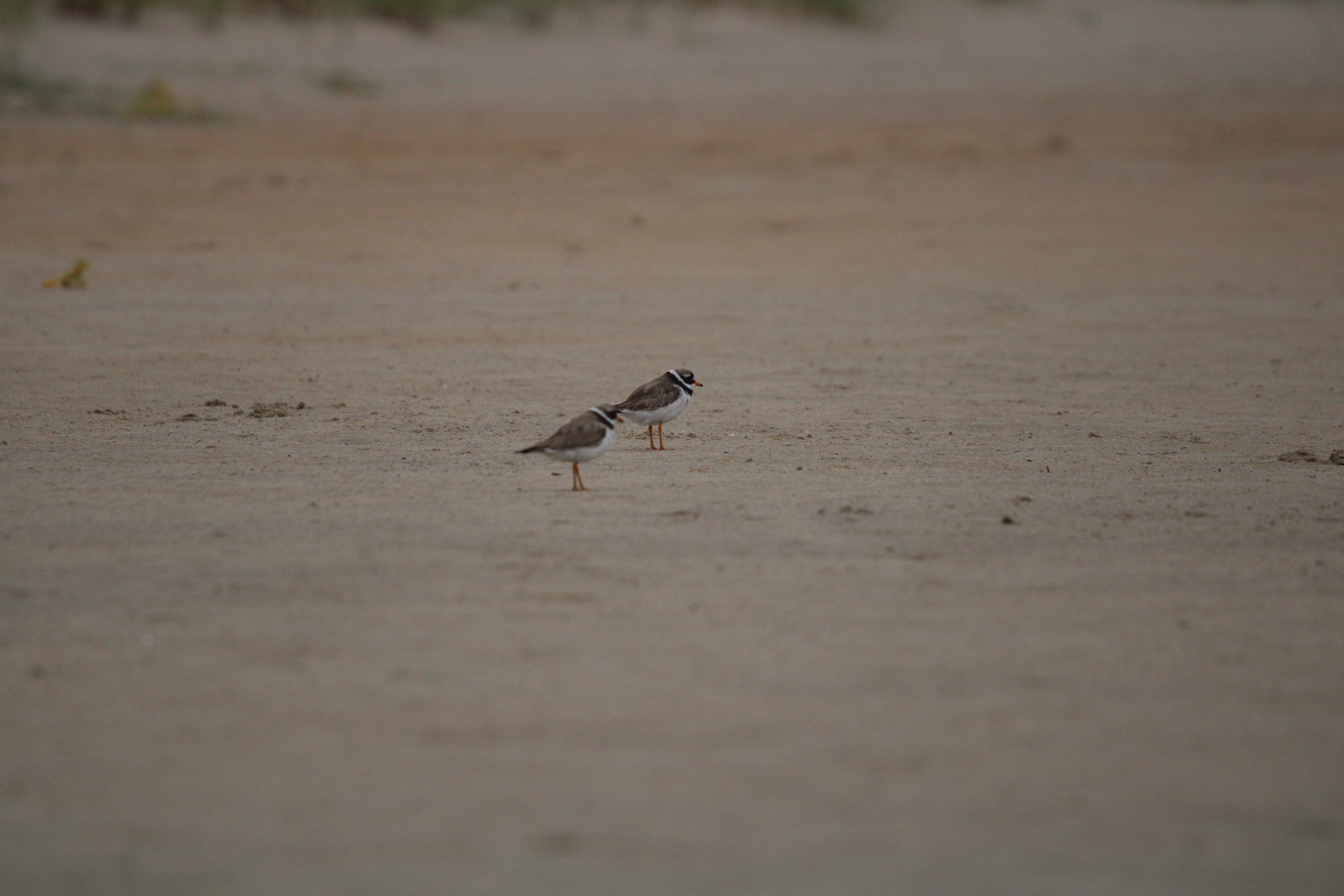Her på Skagen Fuglestations blog bringes korte nyheder i dagbogsformat om hændelser på fuglestationen.
Se indlæg fra måned: jan. (1)feb. (8)mar. (31)apr. (29)maj (30)juni (28)juli (32)aug. (31)sept. (30)okt. (31)nov. (30)dec. (8)
Space Station
Last night, Lisa and Simon spent a long time trying to download data from the base station (which he keeps accidentally refering to as the space station) we had left near a tern roost on Grenen. It's meant for a project for Aarhus University, tracking Splitterne (Sandwhich Tern) but unfortunately we did not get any hits. Tern numbers have been a little lower this week than last. Later I took it out again around 5pm and moved its position slightly to be closer to the tern roost, in hopes of it managing to download data from a radio-tagged tern.
There were many birders, including Simon and Knud, at Grenen today from sunrise onwards. They all spent many hours looking for the Cistussanger (Zitting Cisticola) and were blessed with better views and better audibility than yesterday! Today it kept a more consistent location, hanging around the rushes behind World's End 3. It regularly flew, allowing for nice views and even for some pictures. I didn't get to see it today, though. As usual, Erik managed somehow to get some pretty good pictures.
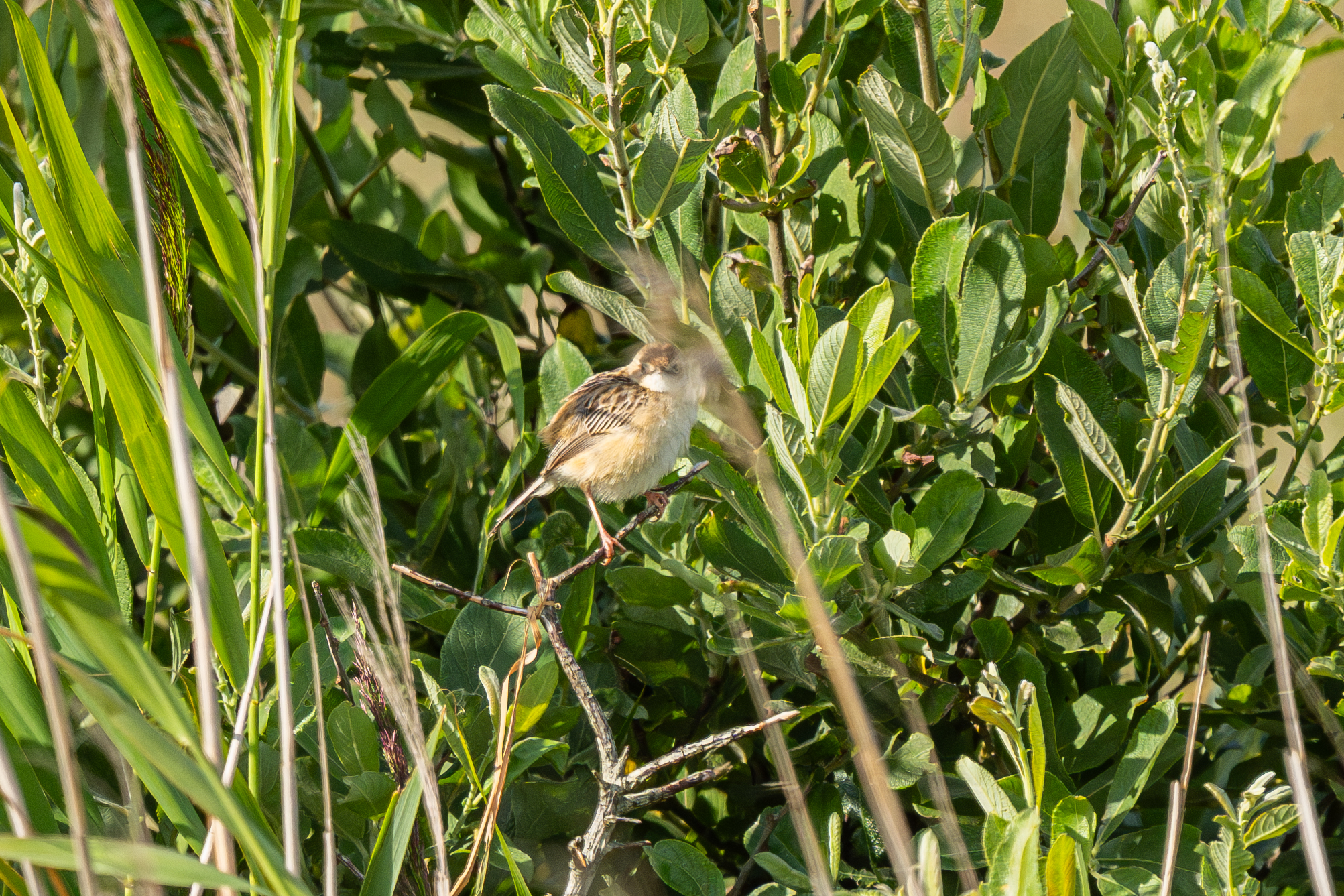
Aside from the Cistussanger, we also observed two Almindelig Skråpe (Manx Shearwater) not too far, and later very far, at sea.
A new volunteer also arrived today from Germany, Martina! She has been here twice before and will this time stay until mid August.
A link to today's observations from volunteers and local observers.
Skagen People: Seán Walsh, Kalina Siwek, Martina Hillbrand, Knud Pedersen, Simon S. Christiansen, Mark & his children.
Observations and celebrations
Today, for me and Sean, the day began at 4 am. It was a brisk, windy morning. We headed out to Grenen for sunrise (4:45 am) to begin our morning migratory count. Other than the usual flocks of Sølvmåge (herring gull), Svartbag (great black-backed gull), Sildemåge (lesser black-backed gull) and Fjordterne (common tern), we also observed 6 Almindelig kjove (arctic skua) and one Lille kjove (long-tailed skua)! After the observations we came back home to eat breakfast and nap.
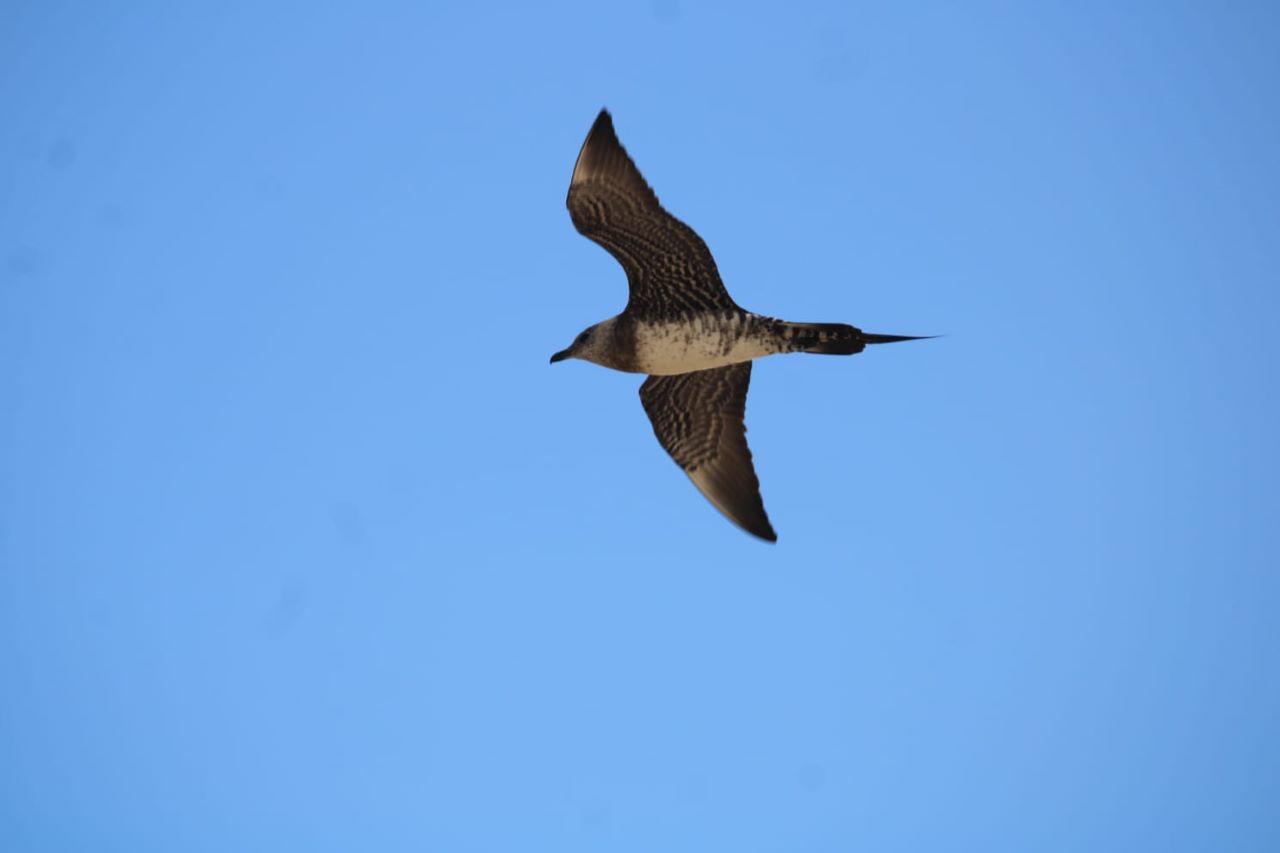 Photo by: Sean Walsh
Photo by: Sean Walsh
A Zitting Cisticola (Cistussanger) was found by Rolf Christensen at Grenen in the morning, which Sean heard and saw later in the day. Only the 6th record for Denmark but the 5th for Skagen.
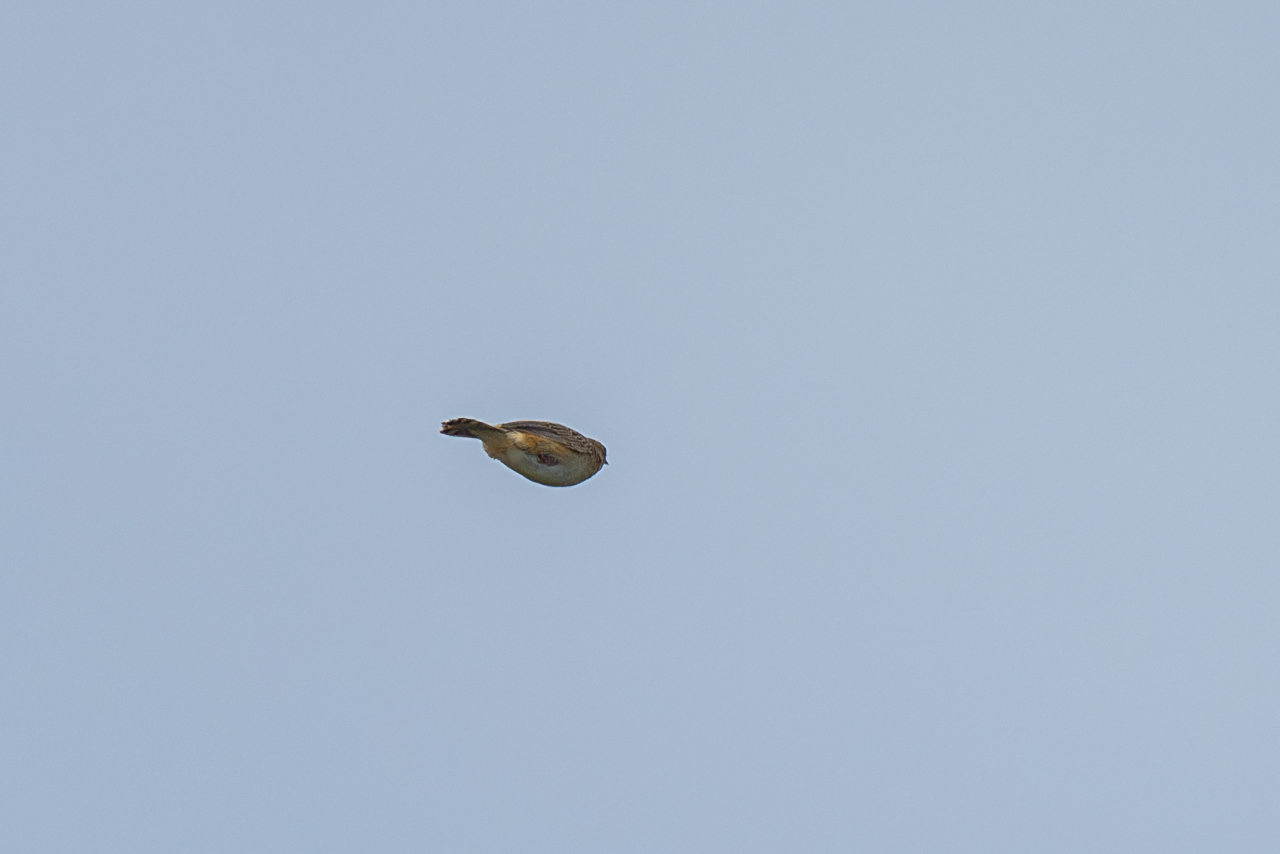 Documentation of Zitting Cisticola (Cistussanger). Photo: Erik Christophersen
Documentation of Zitting Cisticola (Cistussanger). Photo: Erik Christophersen
In the evening, we had a big dinner together with all the volunteers, Simon and Lisa, and the apartment guests, Mark Desholm and his three children. Some of us later played the Viking Game in the garden.
Skagen People: Seán Walsh, Kalina Siwek, Simon S. Christiansen, Mark & his children
A link to today's observations from volunteers and local observers.
CES
For the first time in two weeks, we went ringing again at Skarvsøen for the standard CES ringing. This required an earlier start than for the usual morning observations, as we left the station by 03:30 and the nets at the lake were open by 04:15. With the wind, we weren't expecting much to be caught, but in the end it turned out that the first two or three net rounds were wuite productive! We caught many juvenile birds, including a scarcely ringed bird here at Skagen; a Grønsisken (Siskin). This Grønsisken ended up being the first ever bird I have ringed, which is a great bird to start on as some people have been unlucky as they started with the Tit family, which are quite bitey.
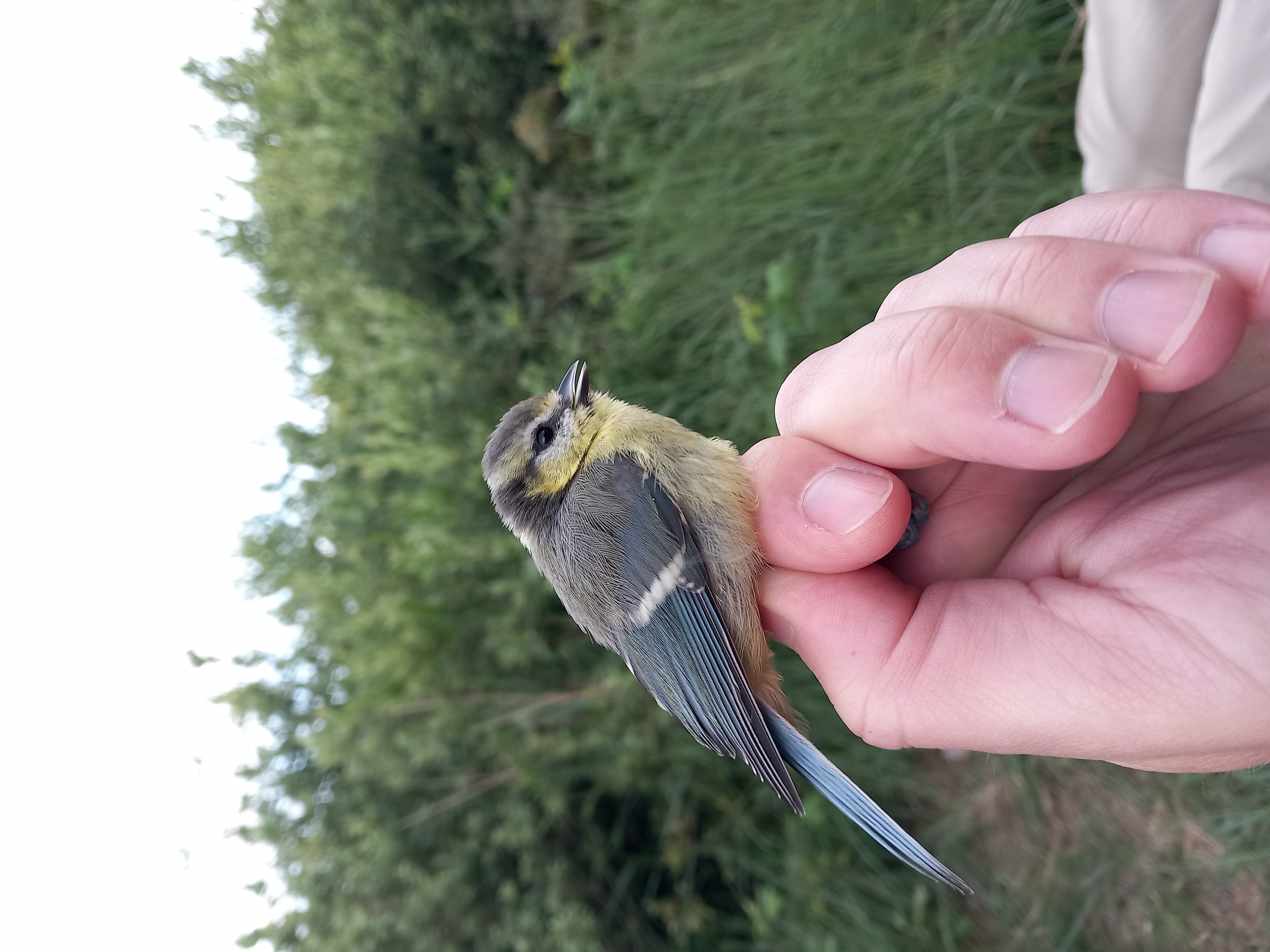
Juvenile Blåmejse in Mark Desholm's hand.
The latter half of the ringing session didn't go as productively, however. Many of our net rounds ended in zero birds caught due to the wind. After six hours of the nets being open, we finally closed them and headed home to enter the data (and sleep). We didn't really do anything else of note today.
Knud spent the morning at World's End 3 on our behalf doing the morning observations. There he saw a couple Almindelig Skråpe (Manx Shearwater) and a Sorthovedet Måge (Mediterranean Gull).
In the afternoon we watched Tour De France at Simons place where we could enjoy the yellow jersey coming closer to victory. And of course there where served Guiness for the Irish guests.
A link to today's observations from volunteers and local observers.
Skagen People: Seán Walsh, Kalina Siwek, Knud Pedersen, Simon S. Christiansen, Mark & his children, and Marcus, Matthis & Robin.
Ringing totals:
Solsort: 1
Musvit: 1
Gærdesanger: 1
Rørsanger: 17
Gransanger: 1
Grønsiskin: 1
Munk: 1
Late night ringing
Yesterday evening, at 11 pm, me, Sean, Mark and Malthe met with Simon and Lisa and we all headed out to Grenen. Our task was to capture waders, terns and gulls to ring. We went at 11 pm because it was important to carry this out after nightfall, in the dark. Simon brought a high power torch to momentarily blind the bird, while Lisa captured it in a net. Me, Sean, Mark and Malthe kept a distance behind them, to allow them to carry out this task without us distracting and scattering the birds. Lisa and Simon managed to capture a Sildemåge (lesser black-backed gull). We brought it back to the lighthouse laboratory, where we measured the gull's wingspan and head and beak length and put a metal ring on its leg. Afterwards we released the gull on the beach and got back home to sleep around 1:30 am. During the walk in the night we "unfortunately" also saw the invasive Racoon Dog (Mårhund) around the small dunes on the beach.
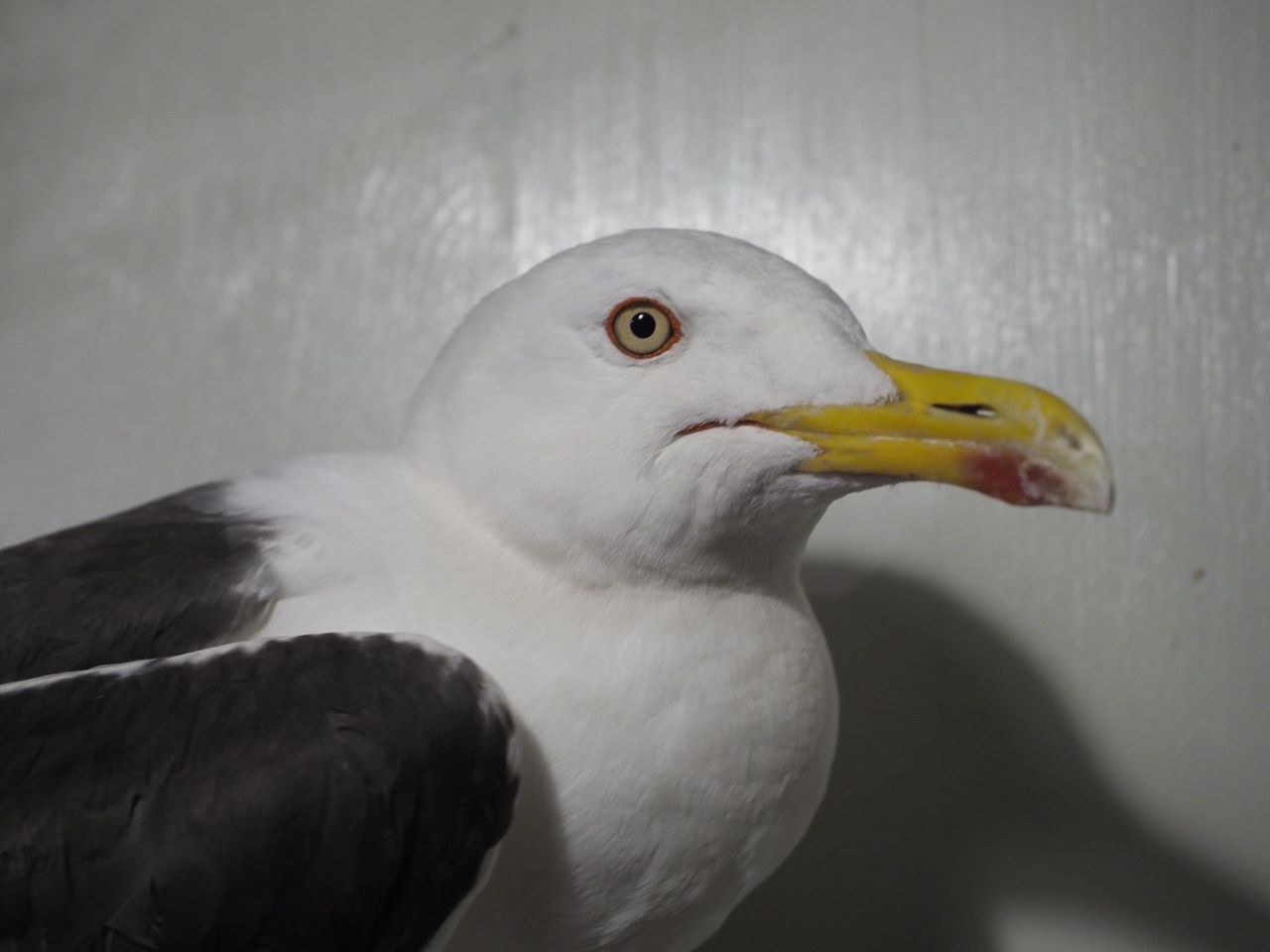
Sean got up again at 4 am to go to Grenen and carry out the morning migratory count. The most unusual sighting was a Toplærke (Crested lark).
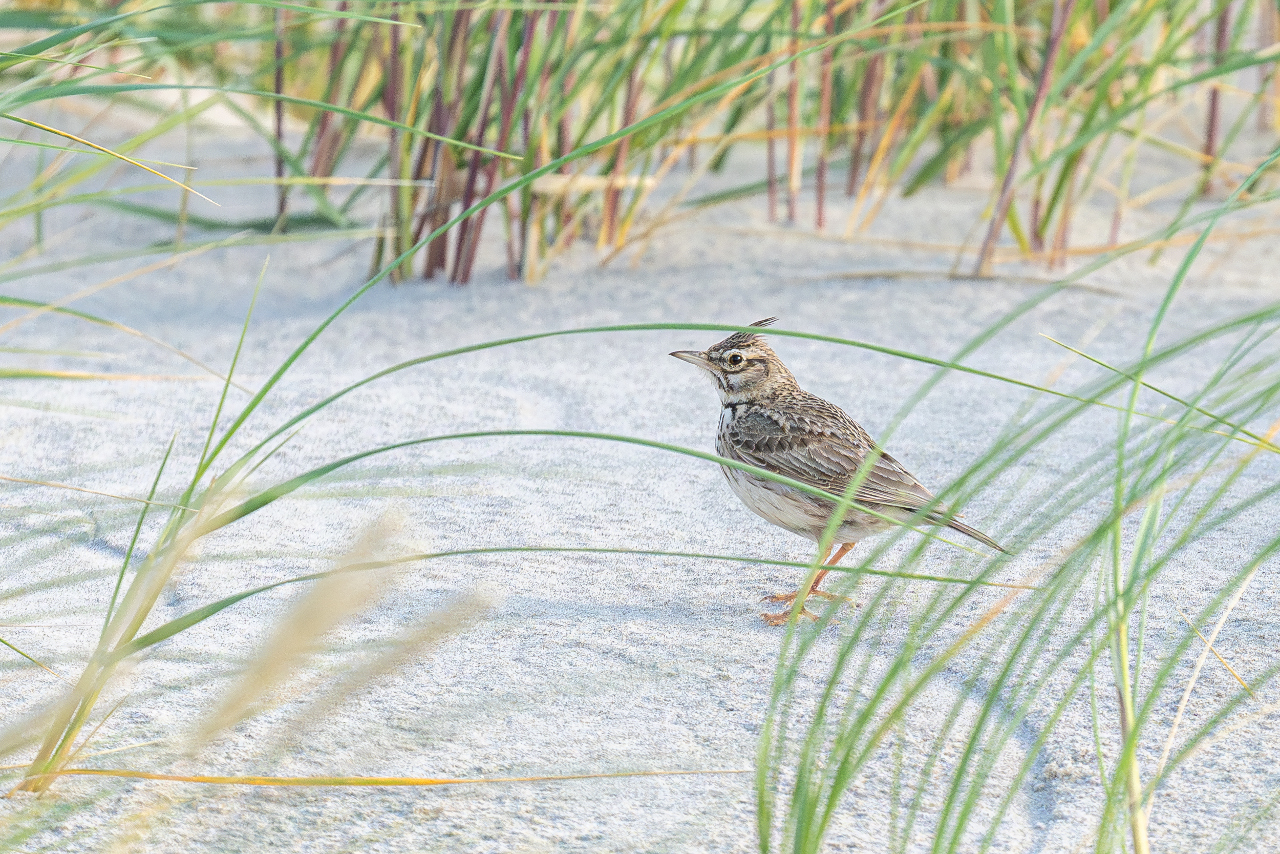 Photo: Erik Christophersen.
Photo: Erik Christophersen.
Later in the day, Simon and Sean went out to Grenen again to place a base station near a flock of roosting sandwich terns, so that it can collect data from GPS-tagged terns. This is as part of a project from Aarhus University. Afterwards we held a meeting with all volunteers and apartment's guests to discuss the plans for the week and around 6 pm, we had dinner, which Sean cooked.
There was also a very interesting recapture documented today. We received word from Spain that a garden warbler that was ringed here, at Skagen Fuglestation, on the 23rd of August last year, was recaptured in Catalonia, Spain, on the 2nd of June this year!
People: Seán Walsh, Kalina Siwek, Knud Pedersen, Erik Christophersen, Simon S. Christiansen, Mark & Malthe
A link to today's observations from volunteers and local observers.
Scarce birds
The morning bird observations were laiden with rare birds today. Migration seemed to have picked up since the high winds & waves yesterday. Aside from the usual Sortand (Common Scoter) and Ederfugle (Eider), there was high(er) numbers of waders again today! It started with more than the usual Almindelig Ryle (Dunlin) and Krumnæbbet Ryle (Curlew Sandpiper), as well as a Lille Kobbersneppe (Bar-tailed Godwit). Later on, I managed to spot a Sortklire (Spotted Redshank) and refind the Kærløber (Broad-billed Sandpiper). Gulls and terns were in exceedingly high numbers today, as I counted over 2 thousand of the various gull species alone, including a Mellemkjove (Pomarine Skua), Rovterne (Caspian Tern), a Dværgterne (Little Tern) and a Sortterne (Black Tern).
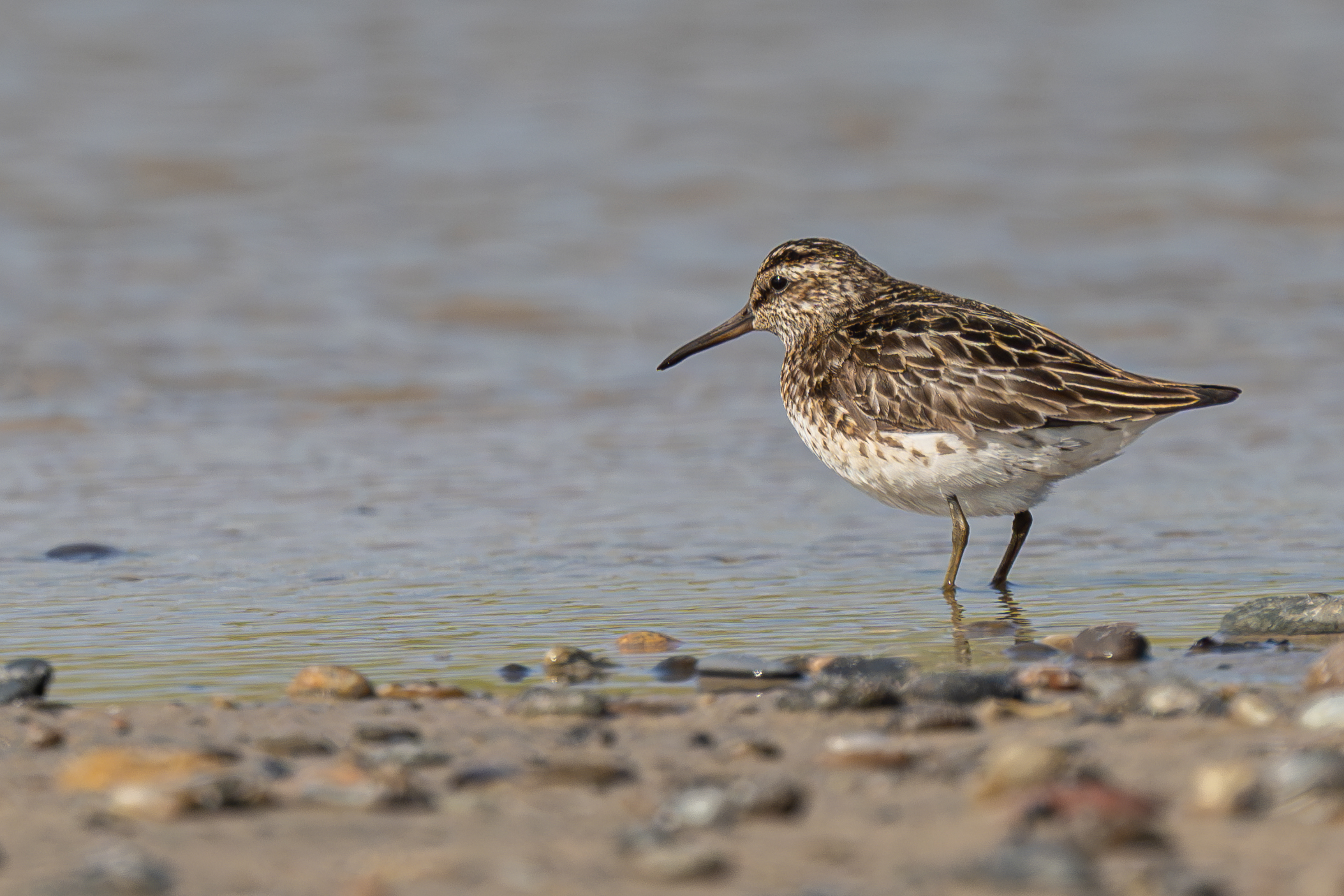
Broad-billed Sandpiper (Kærløber) Photo: taken yesterday 16/8 at Grenen by Erik Christophersen.
Our guests today also participated in the Skagen Pride Festival! While the volunteers were busy sleeping after the morning observations, Mark & his children visited the town centre for the pride parade which had nice turnout this year.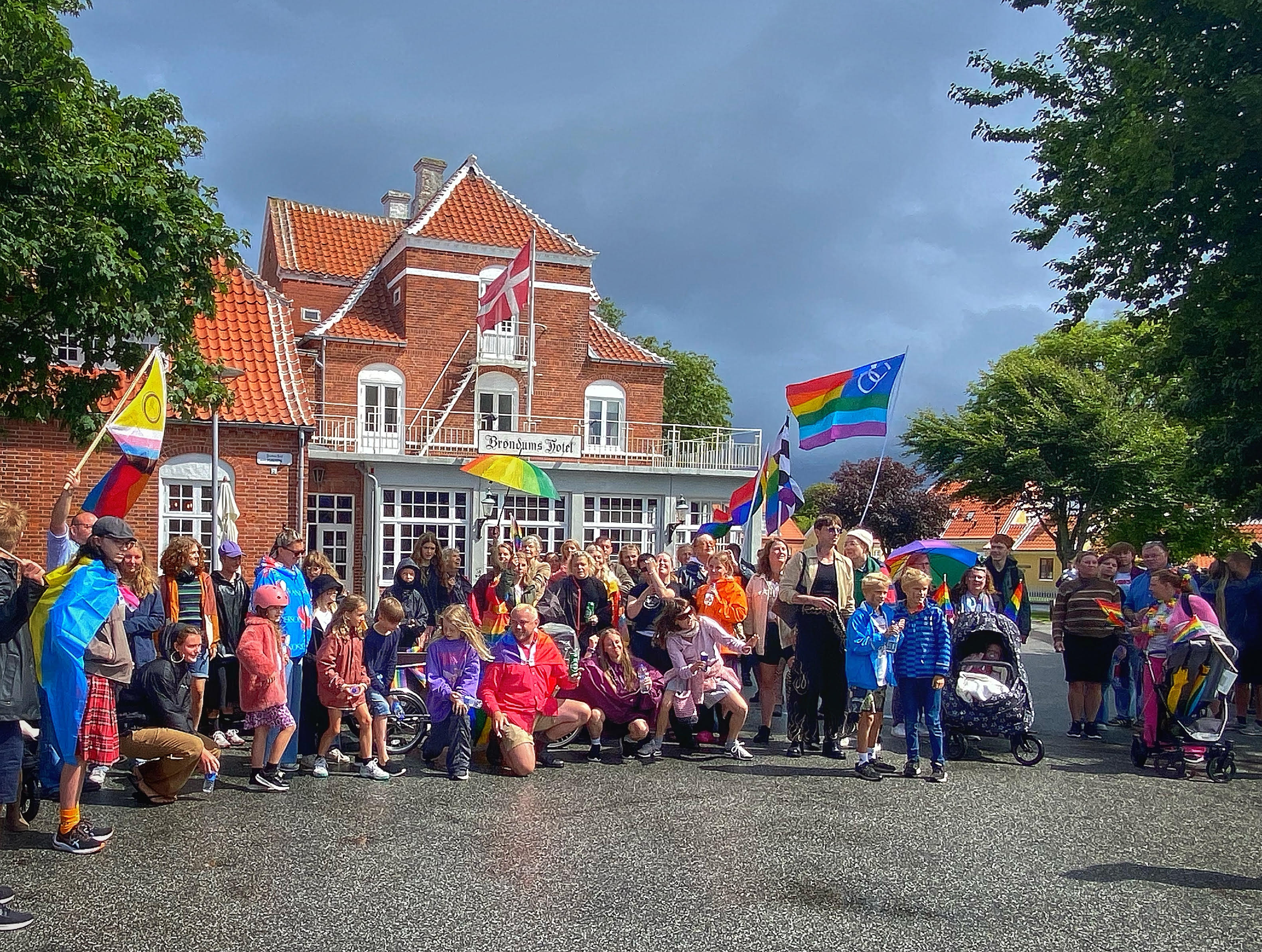
A link to today's observations from volunteers and local observers.
Skagen People: Seán Walsh, Kalina Siwek, Knud Pedersen, Simon S. Christiansen, Mark & his children.
A good day for waders
Last night, looking at the weather forecast, I thought that I might have gotten lucky, because there would be rain most of the early morning. That I would get a little sleep in before starting the morning migration counts. Thunder roared most of the night, but as it started to brighten up outside, it becalm unseemingly calm, so I went out to Grenen for sunrise anyways. It couldn't have started out quieter. The Ederfugle (Eider) were way down in numbers, and there was barely any Sortand (Common Scoter) movement. While migration was mostly slow, the first interesting bird of the morning caught my eye. An adult Sortterne (Black Tern) flying with the wind at sea. The interesting birds at sea stopped there, though. I sorted through the small waders on the pools of the flooded beach, and found 10 Krumnæbbet Ryle (Curlew Sandpiper), 3 Dværgryle (Little Stint), 1 Sandløber (Sanderling) and 3 Islandsk Ryle (Red Knot). After having counted all the roosting birds, I eagerly watched the sea to see if anything popped up, but nothing. After a couple hours of not much, Knud and Kalina arrived and I left to return to the station to nap.
I woke up only a couple hours later to some zello messages, telling me about a Kærløber (Broad-billed Sandpiper) that was seen at World's End 3 not long after I left! By that point, the weather had become spotty, and I managed to take advantage of one of the hours around lunchtime to try to find the Kærløber again, as tourists and tractors had likely scared away it and the flock it stuck to. Knowing this, I decided to take the tractor trail to the east of Grenen, where it was usually quieter on the foot traffick. There were several pools therefrom the recent flooding with many waders seen earlier, and to my luck, the Kærløber as well.
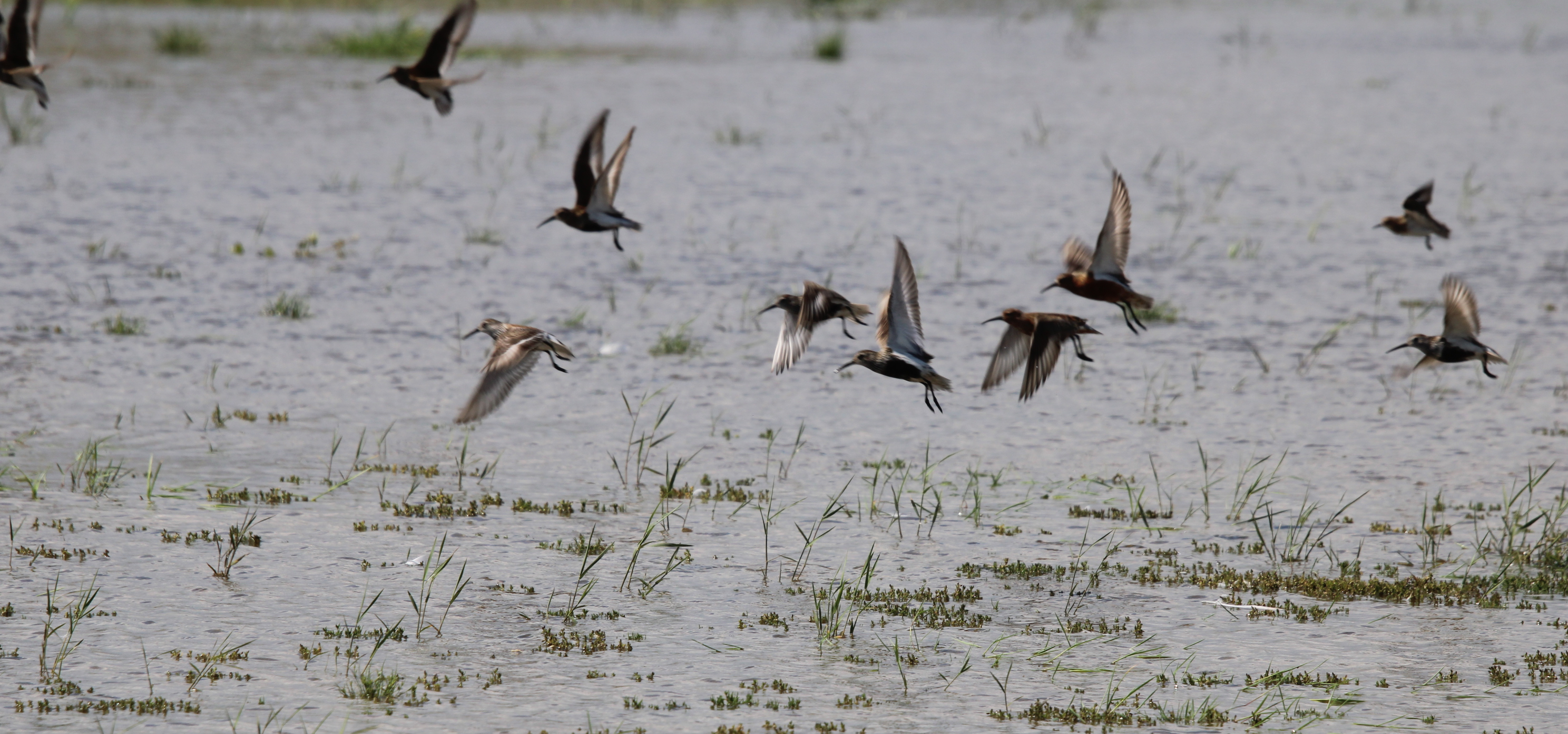
A link to today's observations from volunteers and local observers.
Skagen People: Seán Walsh, Kalina Siwek, Knud Pedersen, Simon S. Christiansen, Mark & his children.
Slow day
Today the weather was not appropriate for any counts or ringing. It was a slightly rainy, windy morning. I woke up around 8 and Sean around 12. In the morning I went on a short walk along the beach. Afterwards I had breakfast. I then busied myself with baking some scones and then Sean and I cleaned the apartment. Sean also went on a walk to Grenen, where despite the poor weather, he saw a Blå kærhøg (hen harrier), a Tårnfalk (kestrel) and a Hvepsevåge (honey buzzard). We finished the day with dinner and an evening meeting with Jesper and Margrit.
Skagen People: Seán Walsh, Kalina Siwek, Simon S. Christiansen, Jesper & Margrit
A link to today's observations from volunteers and local observers
Nuthatches
Although not required to, Kalina and I woke up before 4am to do a morning migratory count for seabirds at Grenen. It was windy, so luckily there was a distinct lack of mosquitoes. There was also a distinct lack of warmth, despite the presence of the sun and no clouds. The count started out as usual, a couple hundred Sortand (Common Scoter) flying by in either direction and some gulls and terns roosting near the dunes. Once again, Almindelig Kjove (Arctic Skua) made their presence known to the terns on the beach by harassing them. As the hours drew by, migration rapidly slowed. Despite the wind, the numbers of passing birds was quite slow, so we decided to count the roosting birds and leave after just three hours. On my return to the lighthouse, I spotted two Spætmejse (Eurasian Nuthatch) in flight and calling above me.
Kalina and I went back home to nap, and I didn't get up again until nearly 1pm. I took the free time I had to clear out the attic of the laboratory and take the waste cans and bottles to the town. Later on I cleaned up and cooked dinner.
A link to today's observations from volunteers and local observers
Skagen People: Seán Walsh, Kalina Siwek, Simon S. Christiansen, Jesper & Margrit
Cormorants
Today, we woke up for 8 am for breakfast with all the lighthouse staff. The restaurant staff prepared a delicious breakfast for everyone working and living in the lighthouse, so that we could all meet each other. Shortly after, me, Sean and Simon headed out to the Cormorant Lake with the intention of counting cormorants. It started raining, so we ran some errands and came back when the weather cleared up. On the way, we saw a mother squirrel with her baby!
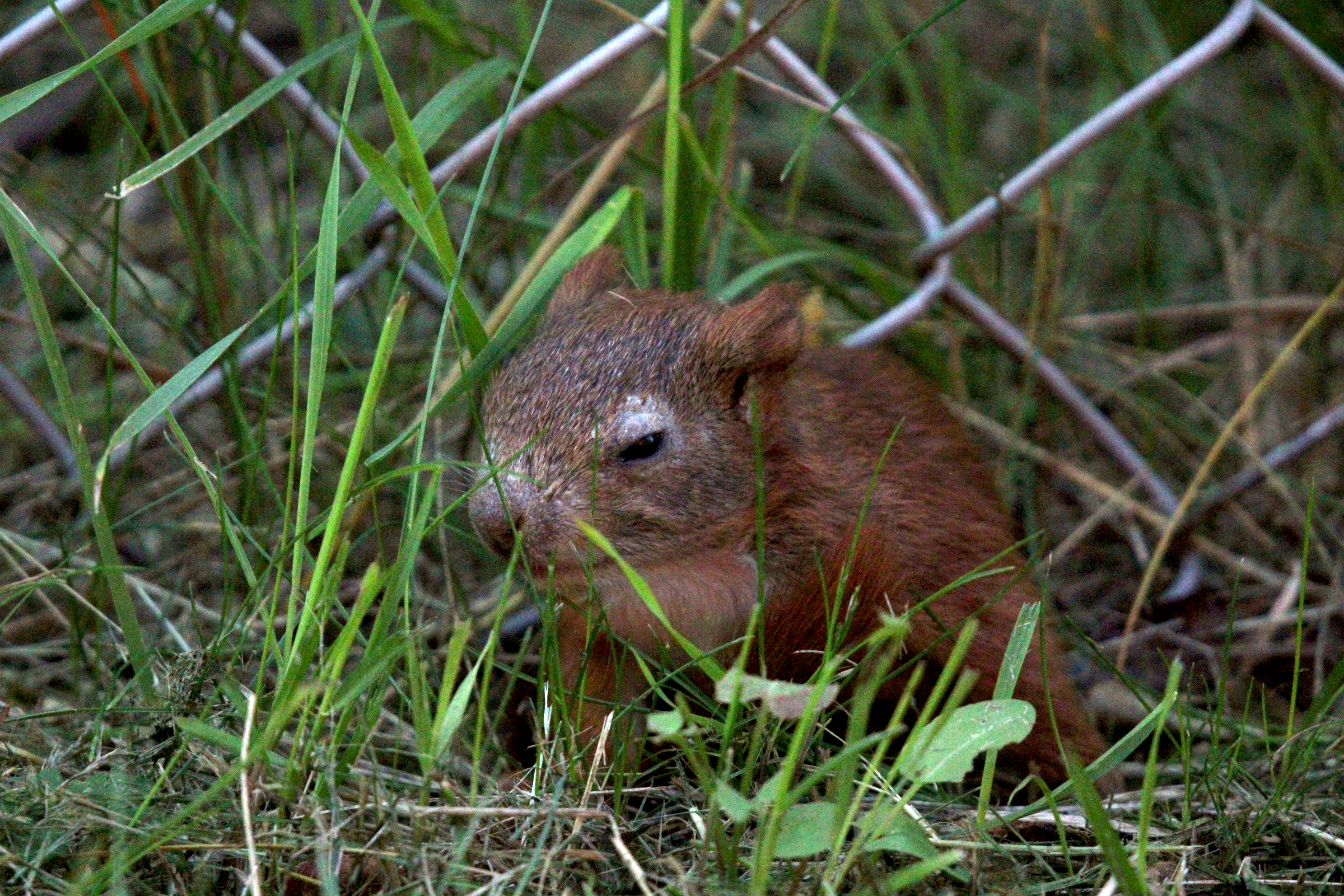
At around 10 am we were counting the adult, 2nd year and juvenile cormorants on the site, as well as the active nests there. There was around 195 cormorants in total. We also saw two red-necked grebes, a breeding pair, as well as some coots and mallards. We also observed a red kite and a hobby! After the cormorant count, we came back to the lighthouse. Me, Sean and Simon all did some admin work, like inputting and organzing data. Towards the evening, I headed out to explore Skagen, and see the port, the old town and the beach. I also saw two young kestrels hunting. Around 6 pm, we had dinner with Jens and Margrit.
Skagen People: Seán Walsh, Kalina Siwek, Simon S. Christiansen, Jesper & Margrit
A link to today's observations from volunteers and local observers
EXTRA BLOG - Interview with a volunteer
What has been your best experiences, both special events, but also across the whole season?
My best day of the spring was undoubtedly June 14th - the day we caught both the Blyth’s Reed Warbler and the Paddyfield Warbler. In a weird twist of fate, I had delivered a presentation on Acrocephalus warbler identification and ageing just the day before and then to catch both these species and put all those skills into practice was brilliant. I was particularly proud of how, as the C permit ringer in charge that day, I handled the situation with identifying both the species, taking all the measurements and wing formula and putting the news out.
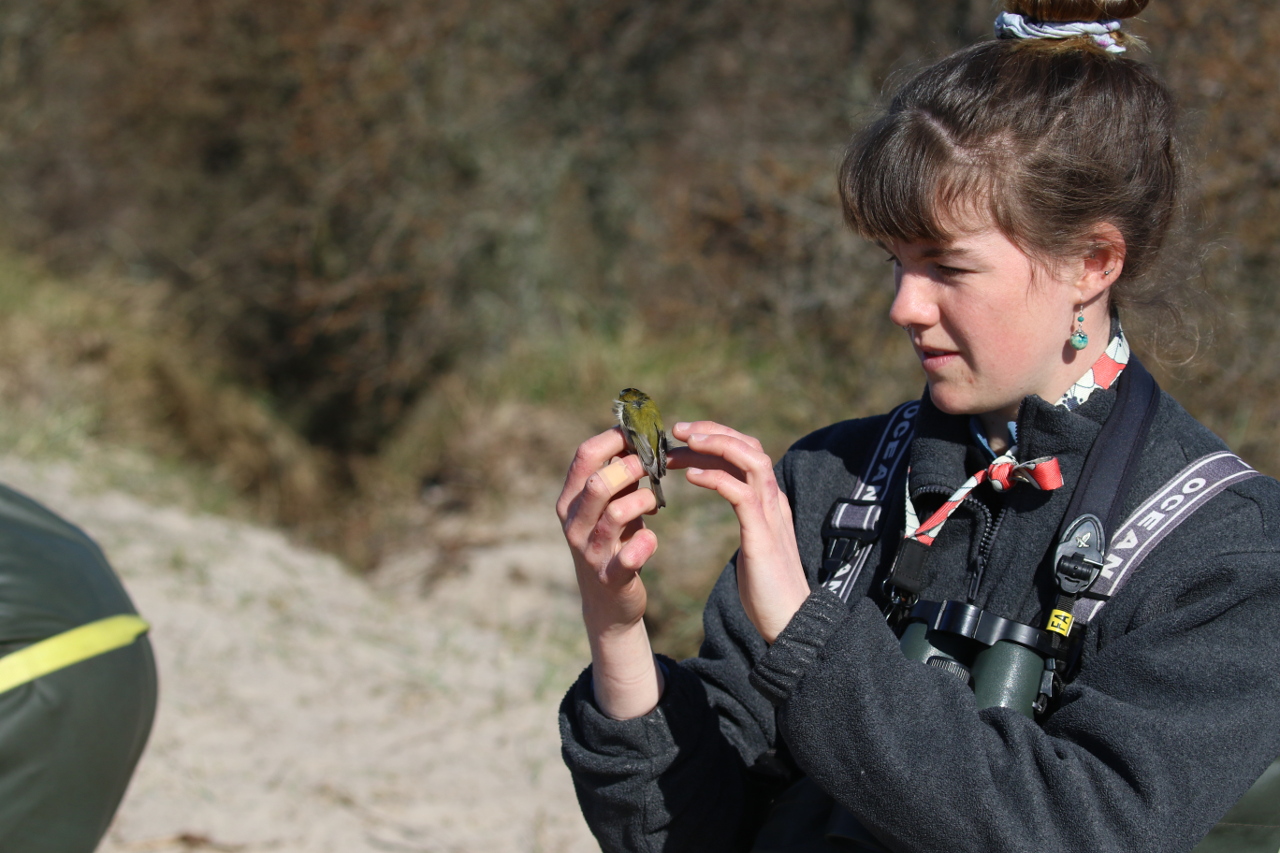
Throughout the season, I have enjoyed the morning observations the most. It has been incredible seeing tons of Pallid Harriers, Rough-legged Buzzards and Honey Buzzards (species I would never see in this number back home in the UK) as well as thousands of Yellow Wagtails, Whooper Swans and migrating finches.
What has been your biggest surprise?
I think my biggest surprise has been the amount of responsibility I have taken on at the station. I was given my C ringing permit in early May and have, since then, led both the ringing at Kabeltromlen and CES multiple times a week. I sometimes found it challenging, especially when managing lots of visitors and volunteers who are completely new to ringing but I definitely learnt a lot during this process.
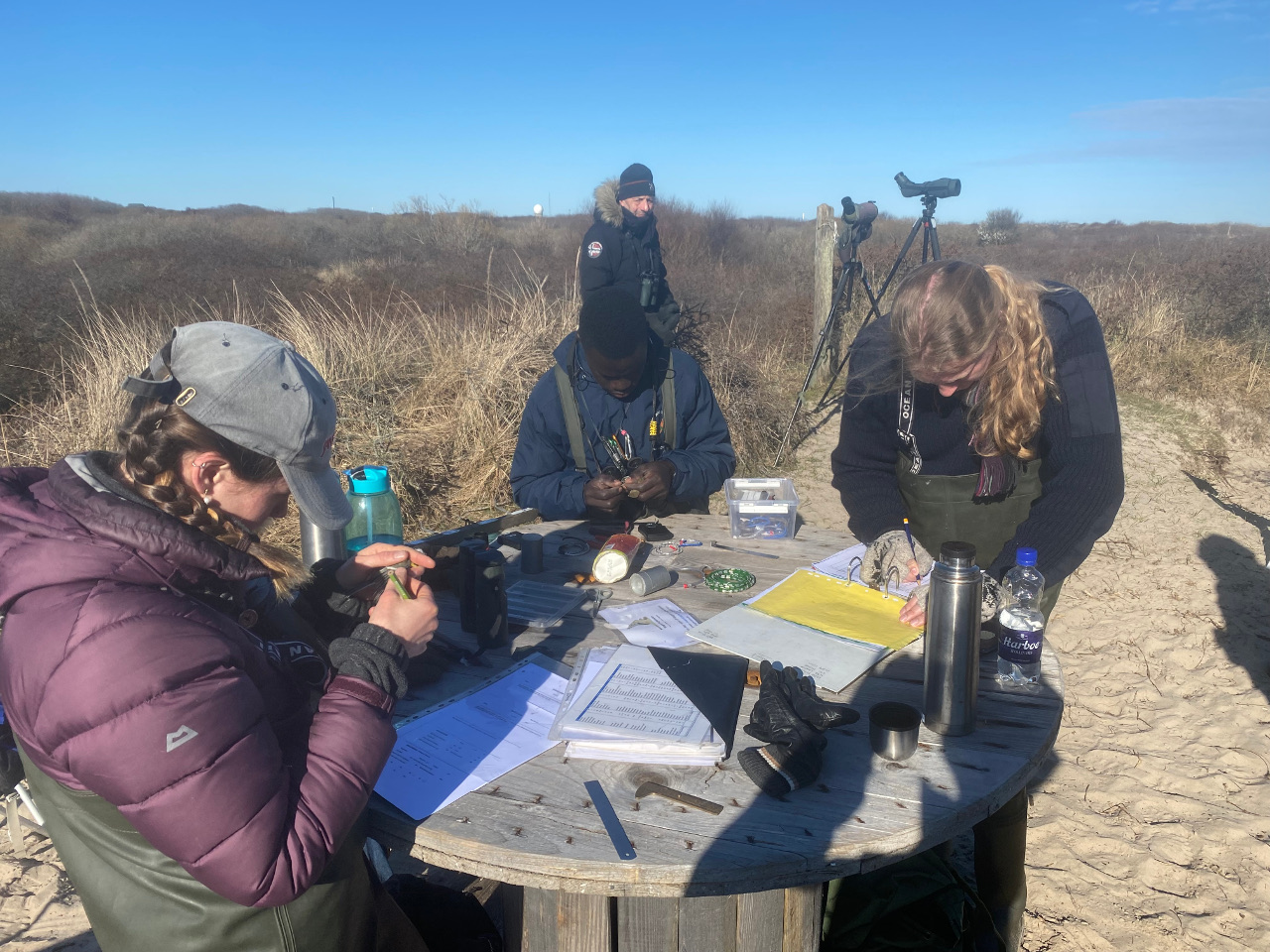
What is your most important take home meeting?
I think volunteering at Skagen Fuglestation has helped me massively improve as a birder. As I mentioned, I enjoyed the observations in late April and early May the most and I have grown so much more confident identifying a wide range of species on call as well as identifying distant raptors.
What will be your main birding focus in the next months/years?
I will be starting a PhD in September studying foraging and chick growth in Manx Shearwaters and so my main birding focus will be conducting fieldwork on a remote Welsh island and GPS tagging adult birds as well as monitoring nests, feeds and chick growth. In my spare time I will be joining a new ringing group who focus on canon-netting waders and I hope to progress to my British C permit.
What has particularly triggered your curiosity the most?
I have been particularly interested in the identification, ageing, numbers and movements of the raptors through Skagen. I have seen many new raptors species here, including Eagles, Harriers, Griffon Vulture and Red-footed Falcons, and I have thoroughly enjoyed learning to identify and age these species. I have also been interested in the change in the populations of the species which migrate through Skagen and speaking to local birders who say, for example, the numbers of Rough-legged Buzzards in Skagen is now just a fraction of those which used to pass through.
Where do you see the potential for the station for further development?
I would have liked to have more lectures and taught sessions. Remember Simon gave us an excellent session on Phylloscopus Warbler identification and ageing and I gave a presentation on Acrocephalus Warbler (where I definitely learnt a lot whilst making it). I found these sessions extremely helpful and I think it would be great to incorporate even more of that kind.
Lauren Evans is 22 years and from Bristol, England. In 2022, Lauren completed her Bachelor in Biology, and since then she has worked with bird monitoring and ringing at the Shetland, Orkney and Faroe Islands. She has a particular interest in Seabirds and Raptors.
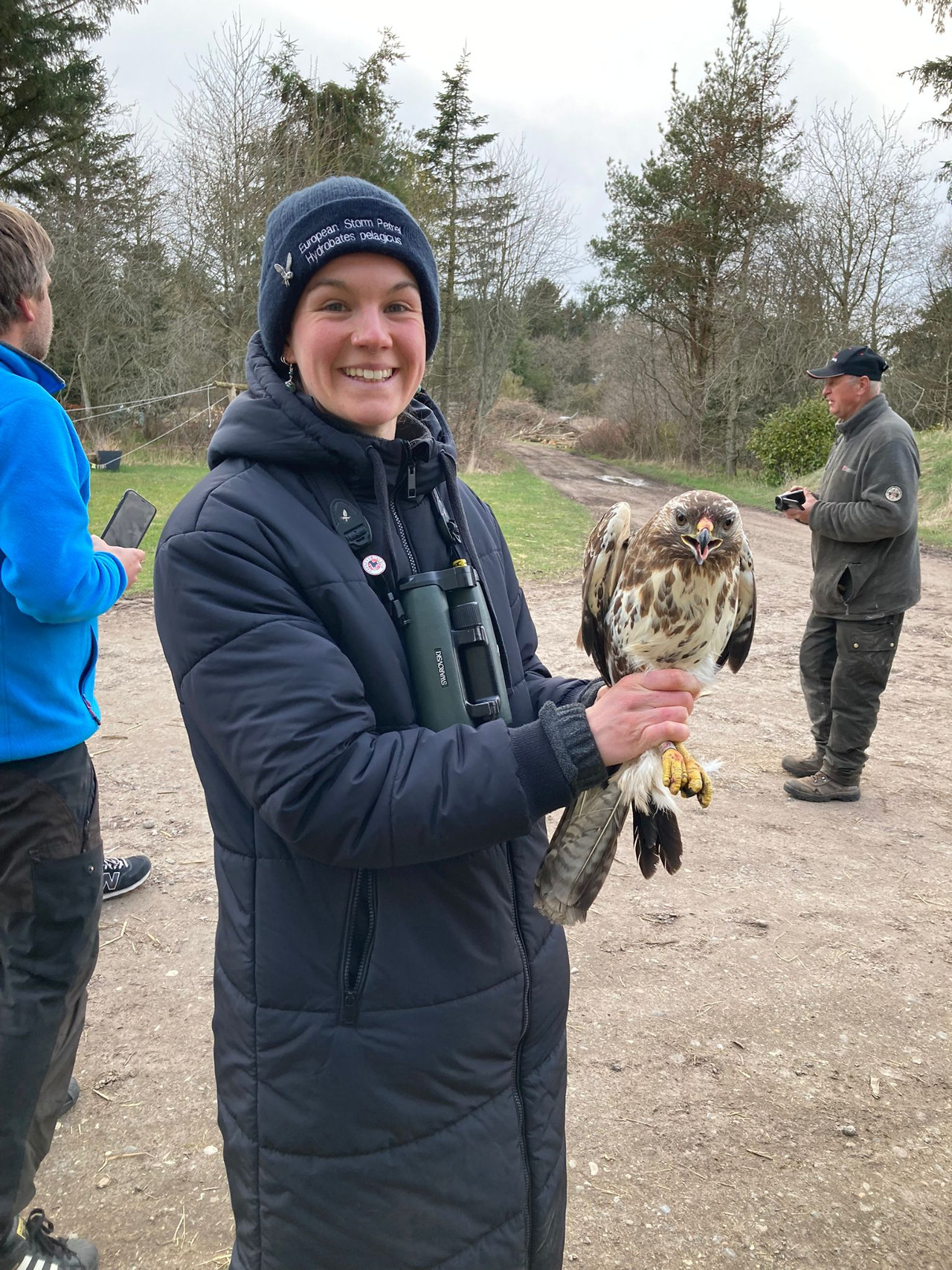 A happy bird ringer with a Buzzard (light phase), before a GPS sender is mounted.
A happy bird ringer with a Buzzard (light phase), before a GPS sender is mounted.
Note: All volunteers at Skagen Fuglestation are involved in the bird ringing activities. Bird ringing licenses are issued by the national Danish Authority on this topic, the Natural History Museum at University of Copenhagen. Some of the volunteers are very new in this, others have substantial experience, e.g. 32-year old Michael Colley from Gambia has for several years been involved in the bird ringing at Kartong Bird Observatory. He came to Skagen as part of the international network, which Skagen Fuglestation is part of. After ending his stay at Skagen, he is now back in Gambia, where he will take part in a project about Vulture Conservation.
Note: alle frivillige ved Skagen Fuglestation involveres i ringmærkningen. Det er Statens Naturhistoriske Museum, der udsteder ringmærkningstilladelserne. Nogle frivillige er nye udi i ringmærkningens verden, mens andre allerede har en lang erfaring med sig i bagagen, f.eks. har 32 årige Michael Colley fra Gambia i over ti år hjulpet til ved ringmærkningen på Kartong Fuglestation. Han kom til Skagen som en del af det internationale samarbejde Fuglestationen har med andre lignende fuglestationer. Han er nu tilbage i Gambia, hvor næste trin for ham bliver at lave projekt med gribbe.
